5.8GHz Fatshark spiroNET Antenne Set Cloverleaf
|
The 5.8GHz Fatshark spiroNET Antenne Set Cloverleaf are cloverleaf antennas tuned to 5.8GHz. There is no difference between the antennas marked "Rx" and "Tx" due to antenna reciprocity. The antennas are shown in Figure 1: 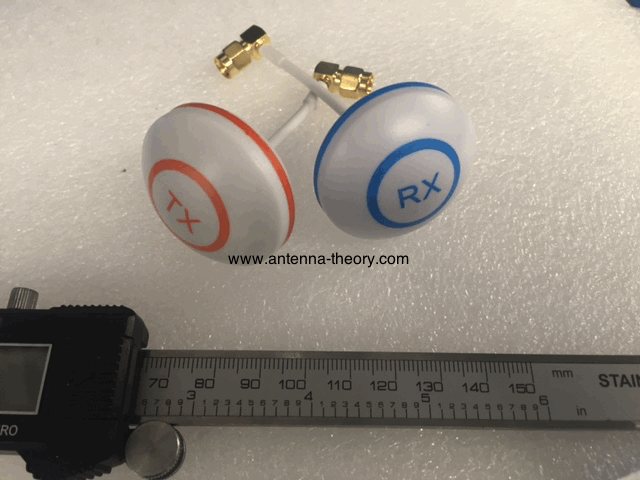 Figure 1. Fatshark SpiroNET Cloverleaf Antennas. These antennas are sold as having SMA connectors, but they are actually RP-SMA (reversed polarity SMA) as shown below:
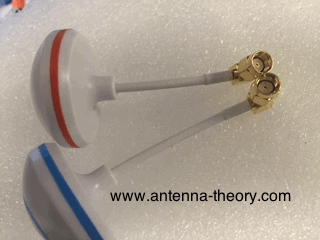
The VSWR is measured for the Fatshark antenna as shown in Figure 2:
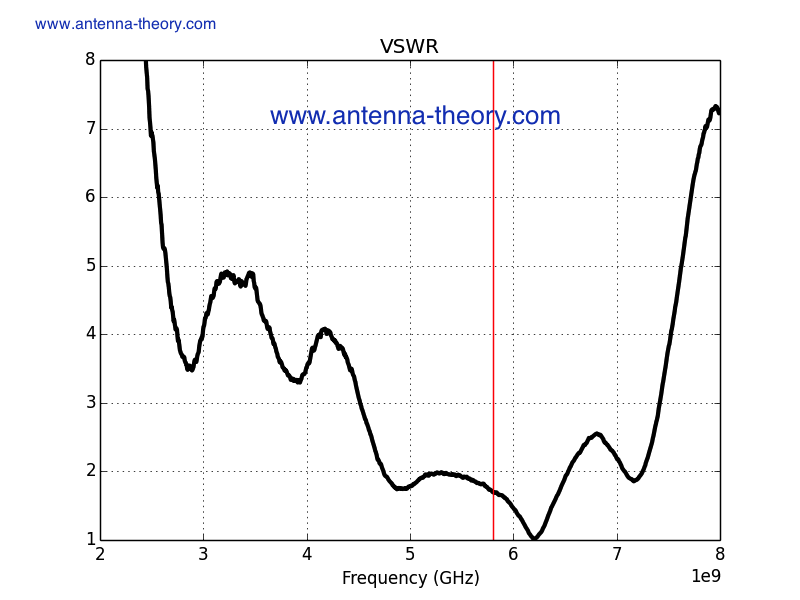 Figure 2. VSWR of Fatshark SpiroNET Cloverleaf Antennas. In Figure 2, I measured the VSWR at about 1.8. Note that the spec sheet for this antenna says the VSWR is less than 1.5; however, I could not verify that. This doesn't seem to be a huge concern, as the antenna efficiency is plotted in Figure 3 and is very good:
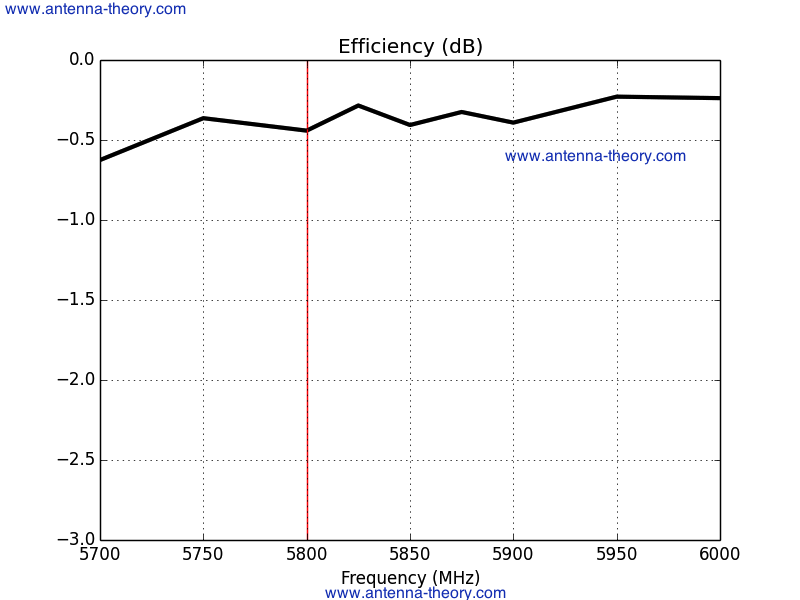 Figure 3. Antenna Efficiency of Fatshark SpiroNET Cloverleaf Antennas. The efficiency of the fat shark antenna is about -0.4 dB (which is >91%). This includes cable loss, so is quite high. The antenna gain of the fatshark antenna is measured to be 3.0 dB at 5.8 GHz. The radiation pattern for the fatshark antenna is shown in Figure 4: 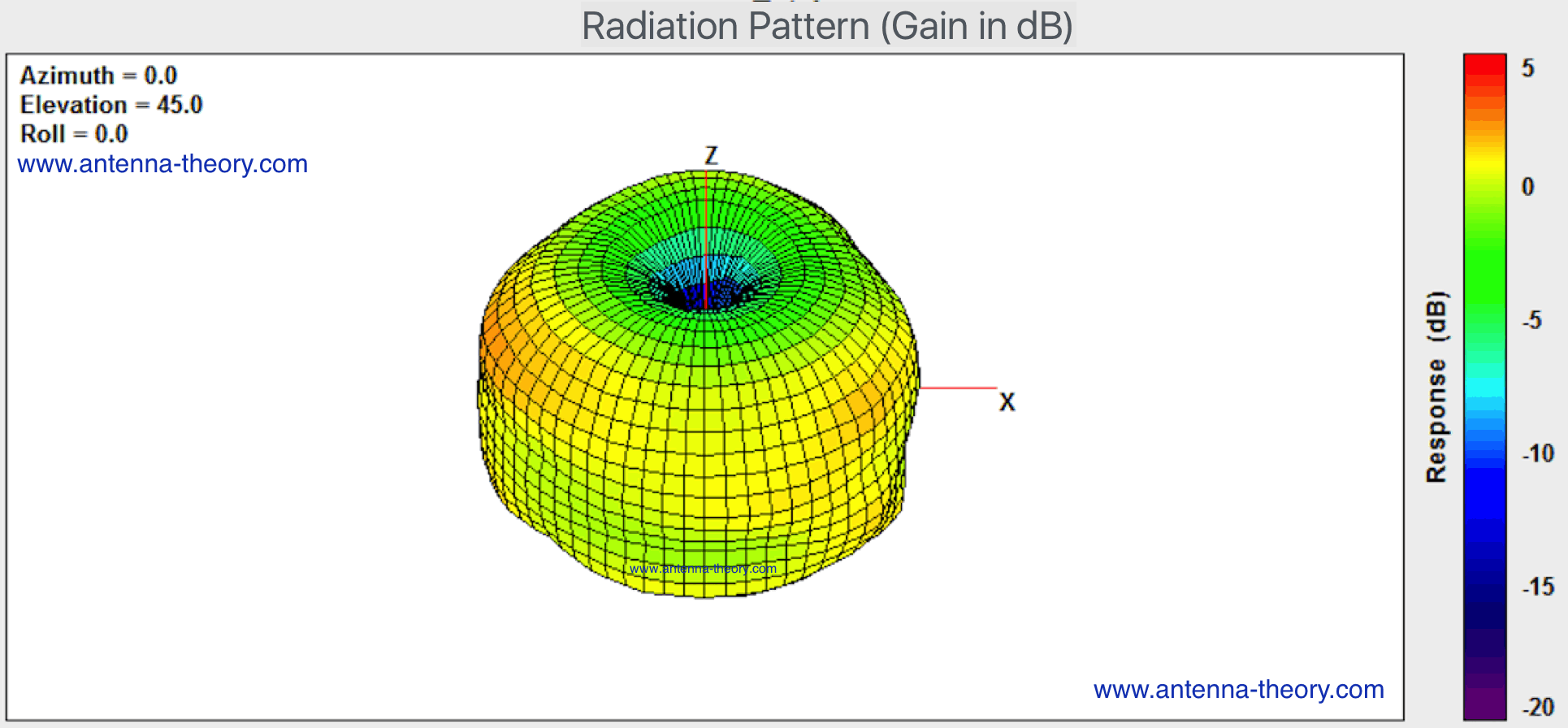 Figure 4. Radiation Pattern of Fatshark SpiroNET Cloverleaf Antennas. Next, we check the circular polarization quality of the cloverleaf. We can do this by looking at the vertical and horizontal components of the Electric field as we rotate the device, as described in the antenna measurements section. To do this, I orient the cloverleaf antenna in an anechoic chamber such that I am measuring the peak direction of radiation (broadside to the cloverleaf), and rotate the device 360 degrees. If the antenna was perfectly circularly polarized, I should see constant E-field components. The degree to which the E-field components deviate is known as the axial ratio. An axial ratio of 0 dB is perfect circular polarization, and the higher the value the more elliptical the polarization is. An axial ratio that is very large is indicative of linear polarization. In Figure 5, we show the E-fields as the fatshark cloverleaf antenna is rotated at f=5.8GHz. 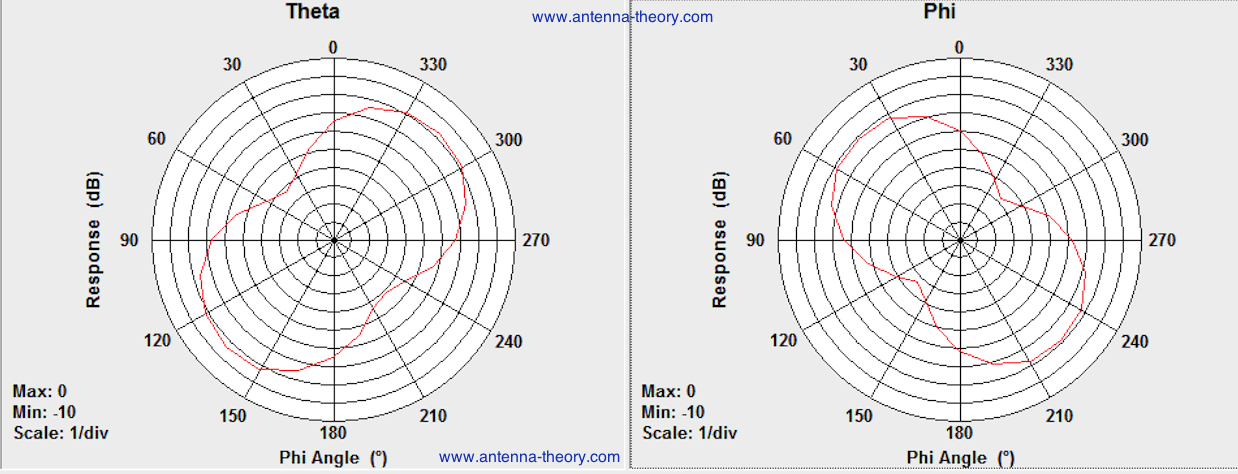 Figure 5. Axial Ratio and Circular Polarization Measurement for the Fatshark Antennas. In Figure 5, the axial ratio is about 3.8 dB. This means the cloverleaf close to circularly polarized, but is not perfectly circularly polarized (this is elliptical polarization). You can find the 5.8 GHz Fatshark spiroNET Antenne Set on Amazon:
Antenna Tutorial (Home)
|